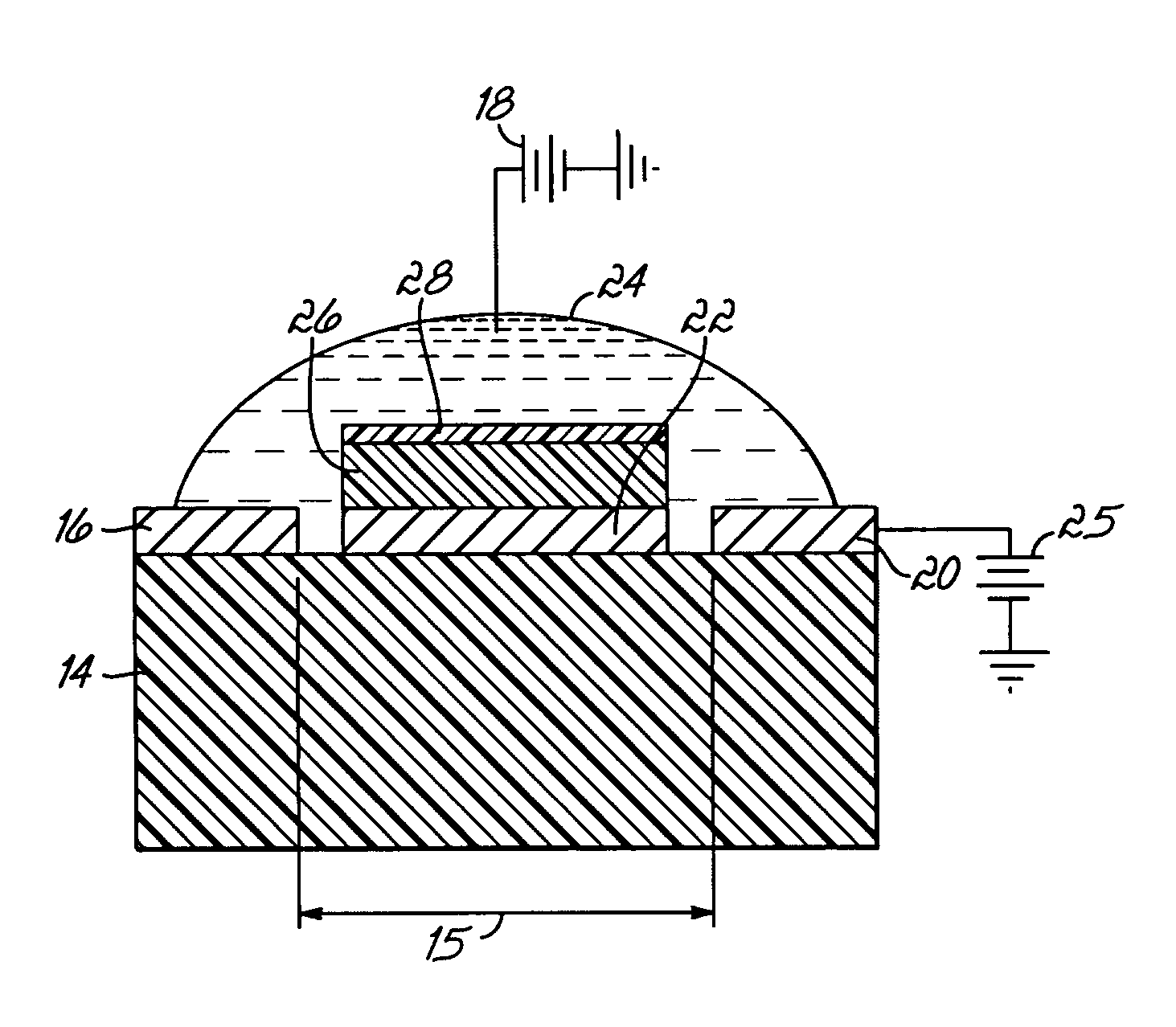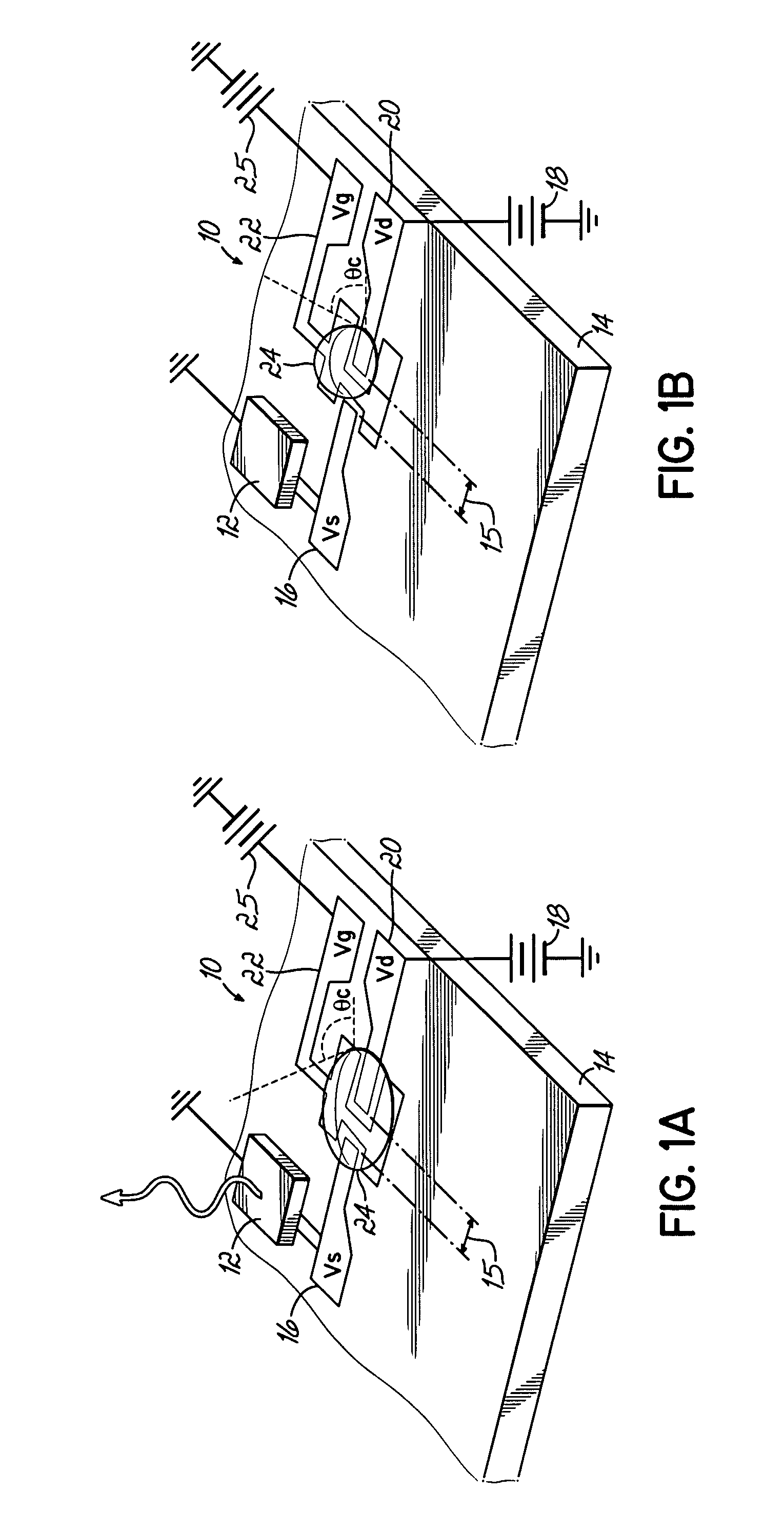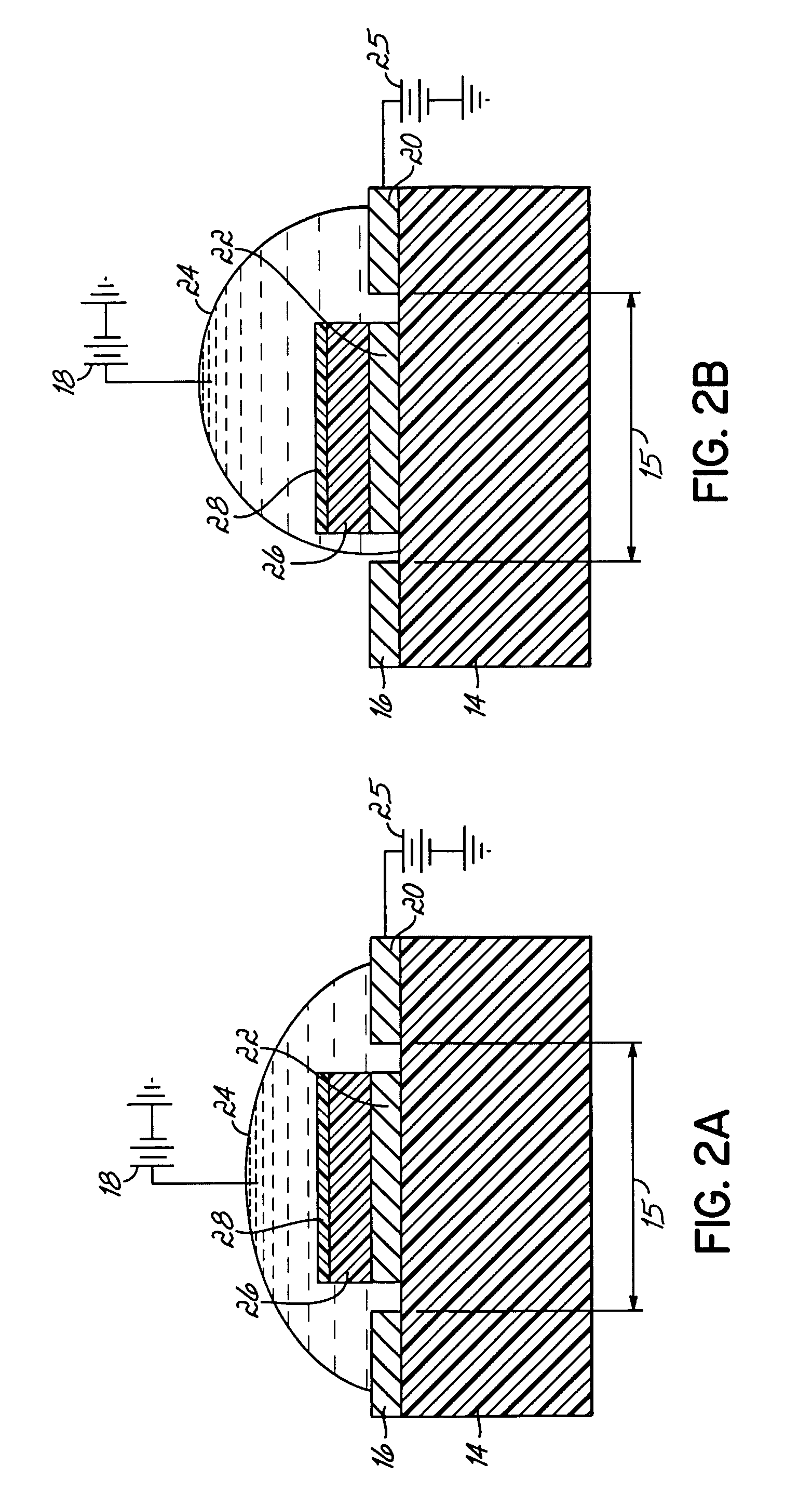Liquid Logic Structures for Electronic Device Applications
a liquid logic and electronic device technology, applied in semiconductor devices, transistors, electrical devices, etc., can solve the problems of limited use of large-area electronics, limited use of low-cost substrates, and limitations on silicon wafer size, so as to increase the density, the effect of increasing the packing density
- Summary
- Abstract
- Description
- Claims
- Application Information
AI Technical Summary
Benefits of technology
Problems solved by technology
Method used
Image
Examples
example
[0038] The prototype liquid logic device described in the example is most consistent with the device operation outlined in FIGS. 1A,B. A 3″ Si wafer was coated with an electrically insulating and hydrophobic DuPont Teflon AF fluoropolymer coating. An electrically conductive droplet containing water and PEDOT / PSS aqueous conductive polymer was then placed on the wafer. A drain electrode was inserted into the droplet, and a source electrode was placed adjacent to the droplet. The source and drain electrodes were then attached to an external battery and a functional device (LED) circuit. A gate electrode was attached to the upper surface of the droplet and a variable voltage source attached to the droplet with reference to the wafer (which acted as ground).
[0039] Upon application of an appropriate gate voltage (10V to 40V) to the droplet, the droplet wetted the hydrophobic surface of the wafer. This decreased the contact angle of the droplet to the hydrophobic surface and caused the d...
PUM
 Login to View More
Login to View More Abstract
Description
Claims
Application Information
 Login to View More
Login to View More - R&D
- Intellectual Property
- Life Sciences
- Materials
- Tech Scout
- Unparalleled Data Quality
- Higher Quality Content
- 60% Fewer Hallucinations
Browse by: Latest US Patents, China's latest patents, Technical Efficacy Thesaurus, Application Domain, Technology Topic, Popular Technical Reports.
© 2025 PatSnap. All rights reserved.Legal|Privacy policy|Modern Slavery Act Transparency Statement|Sitemap|About US| Contact US: help@patsnap.com



